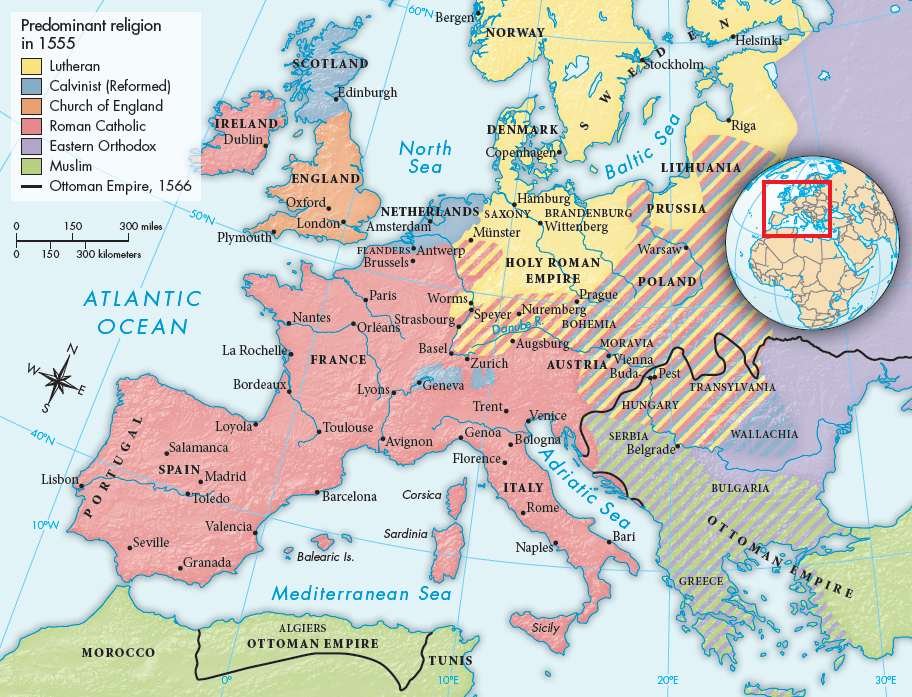Understanding World Societies:
Printed Page 514
The Protestant Reformation
In early-
In regard to absenteeism, many clerics, especially higher ecclesiastics, held several benefices (offices) simultaneously. However, they seldom visited the communities served by the benefices. Instead, they collected revenues from all the benefices assigned to them and hired a poor priest to fulfill their spiritual duties.
There was also local resentment of clerical privileges and immunities. Priests, monks, and nuns were exempt from civic responsibilities, such as defending the city and paying taxes. Yet religious orders frequently held large amounts of urban property. City governments were increasingly determined to integrate the clergy into civic life. This brought city leaders into opposition with bishops and the papacy, which for centuries had stressed the independence of the church from lay control.
This range of complaints helps explain why the ideas of Martin Luther (1483–
Luther lived in the Holy Roman Empire, a loose collection of largely independent states in which the emperor had far less authority than did the monarchs of western Europe. The Habsburg emperor, Charles V, was a staunch supporter of Catholicism, but the ruler of the territory in which Luther lived protected the reformer. Although Luther appeared before Charles V when he was summoned, he was not arrested and continued to preach and write.
Luther’s ideas appealed to the local rulers of the empire for a variety of reasons. Though Germany was not a nation, people did have an understanding of being German because of their language and traditions. Luther frequently used the phrase “we Germans” in his attacks on the papacy, and his appeal to national feeling influenced many rulers. Also, while some German rulers were sincerely attracted to Lutheran ideas, material considerations swayed many others. The adoption of Protestantism would mean the legal confiscation of church properties. Thus many political authorities in the empire used the religious issue to extend their power and to enhance their independence from the emperor. Luther worked closely with political authorities, viewing them as fully justified in reforming the church in their territories. Thus, just as in the Ottoman and Safavid Empires (see Chapter 17), rulers drew their legitimacy in part from their support for religion. By 1530 many parts of the Holy Roman Empire and Scandinavia had broken with the Catholic Church.
In England the issue of the royal succession triggered that country’s break with Rome, and a Protestant Church was established during the 1530s under King Henry VIII (r. 1509–
Protestant ideas also spread into France, the Netherlands, Scotland, and eastern Europe. In all these areas, a second generation of reformers built on earlier ideas to develop their own theology and plans for institutional change. The most important of the second-
The church in Geneva served as the model for the Presbyterian Church in Scotland, the Huguenot (HYOO-
